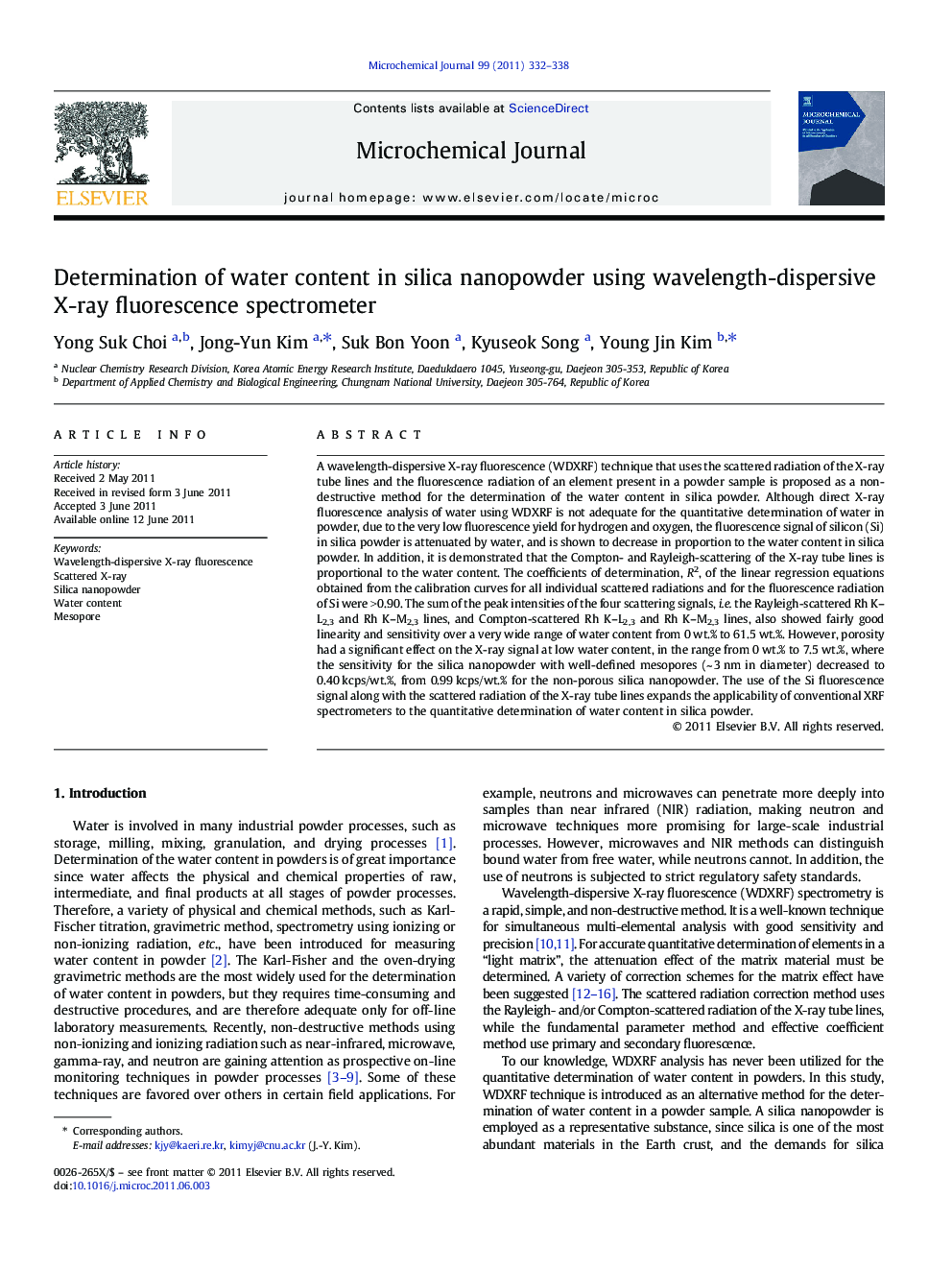| Article ID | Journal | Published Year | Pages | File Type |
|---|---|---|---|---|
| 10556852 | Microchemical Journal | 2011 | 7 Pages |
Abstract
A wavelength-dispersive X-ray fluorescence (WDXRF) technique that uses the scattered radiation of the X-ray tube lines and the fluorescence radiation of an element present in a powder sample is proposed as a non-destructive method for the determination of the water content in silica powder. Although direct X-ray fluorescence analysis of water using WDXRF is not adequate for the quantitative determination of water in powder, due to the very low fluorescence yield for hydrogen and oxygen, the fluorescence signal of silicon (Si) in silica powder is attenuated by water, and is shown to decrease in proportion to the water content in silica powder. In addition, it is demonstrated that the Compton- and Rayleigh-scattering of the X-ray tube lines is proportional to the water content. The coefficients of determination, R2, of the linear regression equations obtained from the calibration curves for all individual scattered radiations and for the fluorescence radiation of Si were >Â 0.90. The sum of the peak intensities of the four scattering signals, i.e. the Rayleigh-scattered Rh K-L2,3 and Rh K-M2,3 lines, and Compton-scattered Rh K-L2,3 and Rh K-M2,3 lines, also showed fairly good linearity and sensitivity over a very wide range of water content from 0Â wt.% to 61.5Â wt.%. However, porosity had a significant effect on the X-ray signal at low water content, in the range from 0Â wt.% to 7.5Â wt.%, where the sensitivity for the silica nanopowder with well-defined mesopores (~Â 3Â nm in diameter) decreased to 0.40Â kcps/wt.%, from 0.99Â kcps/wt.% for the non-porous silica nanopowder. The use of the Si fluorescence signal along with the scattered radiation of the X-ray tube lines expands the applicability of conventional XRF spectrometers to the quantitative determination of water content in silica powder.
Keywords
Related Topics
Physical Sciences and Engineering
Chemistry
Analytical Chemistry
Authors
Yong Suk Choi, Jong-Yun Kim, Suk Bon Yoon, Kyuseok Song, Young Jin Kim,
